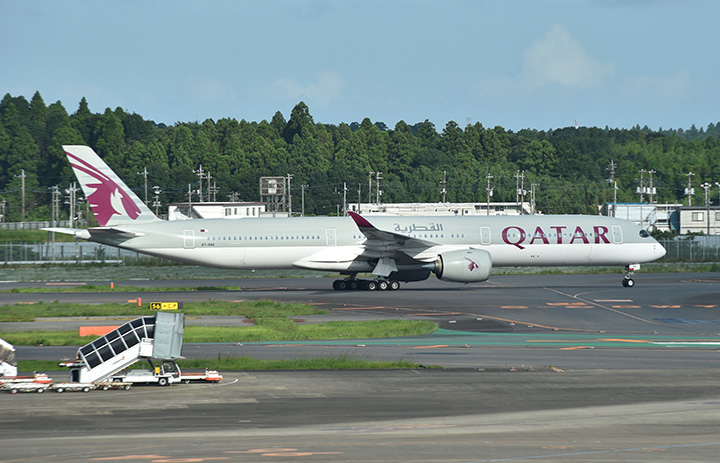
TAMPA, Fla. — SpaceX successfully launched Intelsat’s IS-40e communications satellite April 7, which will help the operator meet growing demand for connectivity on planes while also carrying its first hosted payload for NASA.
The satellite deployed solar arrays and is receiving and sending signals in geosynchronous transfer orbit following its 12:30 a.m. Eastern launch, its manufacturer Maxar Technologies confirmed.
The first stage booster of the Falcon 9 rocket that lifted IS-40e off from Cape Canaveral Space Force Station, Florida, also successfully landed on a drone ship for later reuse.
It will take three weeks for the satellite to use onboard chemical propulsion to reach its final orbital slot at 91 degrees West over North America, Jean-Luc Froeliger, Intelsat’s senior vice president of space systems, told SpaceNews in an interview.
“This is a big satellite with a lot of connectivity,” Froeliger said, and it will likely take another three weeks to check out all its systems to begin operations by the end of May.
Equipped with Ku- and Ka-band capacity, the satellite weighed around six metric tons at launch and is designed to have roughly eight kilowatts of power.
Hosting NASA
IS-40e also carries NASA’s Tropospheric Emissions: Monitoring of Pollution (TEMPO) hosted payload, touted to be the first instrument to monitor air pollution across North America from geostationary orbit.
While Intelsat’s satellites have carried hosted payloads for other government agencies, including the Federal Aviation Administration, Froeliger said this is the first time it has secured such a deal with NASA.
Hosting payloads on commercial satellites enables government agencies to avoid the cost of building dedicated spacecraft, while also helping the operator fund its expenses.
However, these arrangements are often fraught with logistical and other challenges.
IS-40e’s primary mission is to provide connectivity for planes, boats, and land vehicles on the move over North America, with a particular focus on serving the commercial aviation market.
Other applications include cellular backhaul and rapid response connectivity missions for natural disasters.
“This is our first real high throughput satellite over North America,” Froeliger said.
IS-40e’s ultimate location along the equator would make Baton Rouge, Louisiana, the closest city in the United States to the satellite.

Intelsat previously covered a narrower swath of the United States with the Boeing-built IS-29e at 50 degrees West, but that satellite was declared a total loss in 2019 after suffering a fuel leak.
Intelsat has been busy securing deals with other satellite operators in the region in its search for more capacity to serve the mobility market, including Spain-based Hispasat and Eutelsat of France.
“Third-party satellites are nice when you don’t have your own solution, or if your own solution is late,” Froeliger said, “but having your own solution is the way to go.”
Intelsat has one last satellite to launch this year: Galaxy 37, the final spacecraft in the operator’s strategy to be eligible for nearly $5 billion in C-band spectrum clearing proceeds.
SpaceX is slated to launch Galaxy 37 this summer. In addition to C-band, the satellite has a Ku-band payload for meeting high-speed broadband needs over North America.

Jason Rainbow writes about satellite telecom, space finance and commercial markets for SpaceNews. He has spent more than a decade covering the global space industry as a business journalist. Previously, he was Group Editor-in-Chief for Finance Information…More by Jason Rainbow
Note: This article have been indexed to our site. We do not claim legitimacy, ownership or copyright of any of the content above. To see the article at original source Click Here













